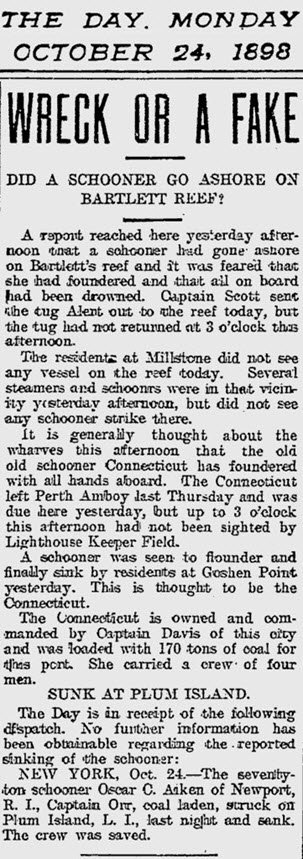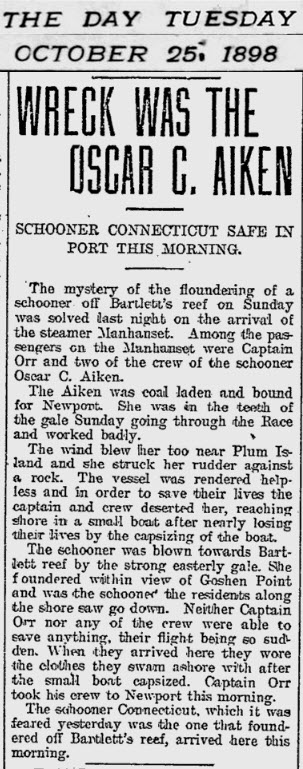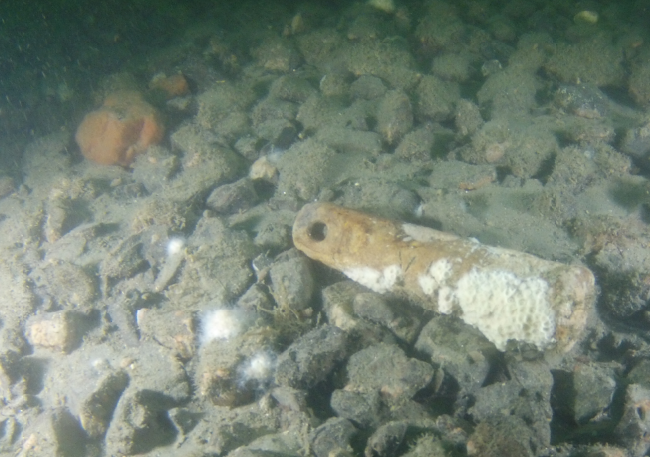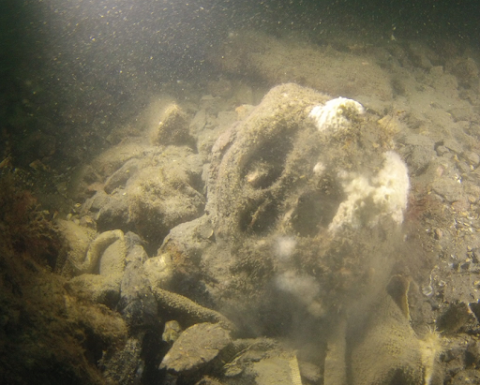Oscar C. Aiken
December 18, 2019The remains of an 1898 shipwreck off the coast of Connecticut has been identified by a maritime avocational research team as the schooner Oscar C. Aiken
On October 23rd, 1898 the seventy-four-foot-long schooner Oscar C. Aiken, bound to Newport Rhode Island with a cargo of coal, foundered a mile and a half east of Bartlett Reef Light and within sight of Goshen Point, Connecticut. The Aiken, while running through The Race during a gale, was blown close to Plum Island New York where she struck a rock and disabled her rudder. Unable to steer, the captain and crew abandoned the schooner and made for the Connecticut shore in a small boat. Upon reaching the shoreline the boat capsized in the surf; fortunately, all aboard were able to swim safely to shore.
While the captain and crew of the Oscar C. Aiken struggled to reach safety, the unmanned schooner drifted towards Bartlett Reef. The schooner’s final moments, witnessed by the residents of Goshen Point, would see her foundering in seventy feet of water. Not having any ready information, the general public believed the sunken schooner to be the Connecticut which was overdue from Perth Amboy with a load of coal for New London. The following day they would learn from the vessels Master, Captain Howard Orr, that it was the coal schooner Oscar C. Aiken.
The shipwreck was located by Sound Underwater Survey in the spring of 2012 and the research to identify it began that same year. It wasn’t until the Fall of 2019 when, after a seven year search, the team found an article in the October 24th 1898 Naugatuck Daily News mentioning the sinking of an unnamed coal schooner in the vicinity of the known shipwreck off Goshen Point. Further articles published in the New London Day confirmed the identity of the shipwreck and after one hundred and twenty-one years the account of the Oscar C. Aiken’s sinking was brought back to light.
The shipwreck now lies in seventy feet of water and rises a scant four feet off the bottom. Most of the wood from the vessel has long disappeared due to the action of shipworms; the wreck could be described as a pile of nut coal eighty feet long, thirty feet wide, and four feet tall. When compared to previously located wrecks of this type, and age, there does appear to be more vessel related debris. This could possibly be attributed to less of trawler fishing activity in the area. Similar shipwrecks typically have little cultural material left, the objects having been dragged off the wreck by fishing dragger bottom trawls.
Approximate Location of the Oscar C. Aiken
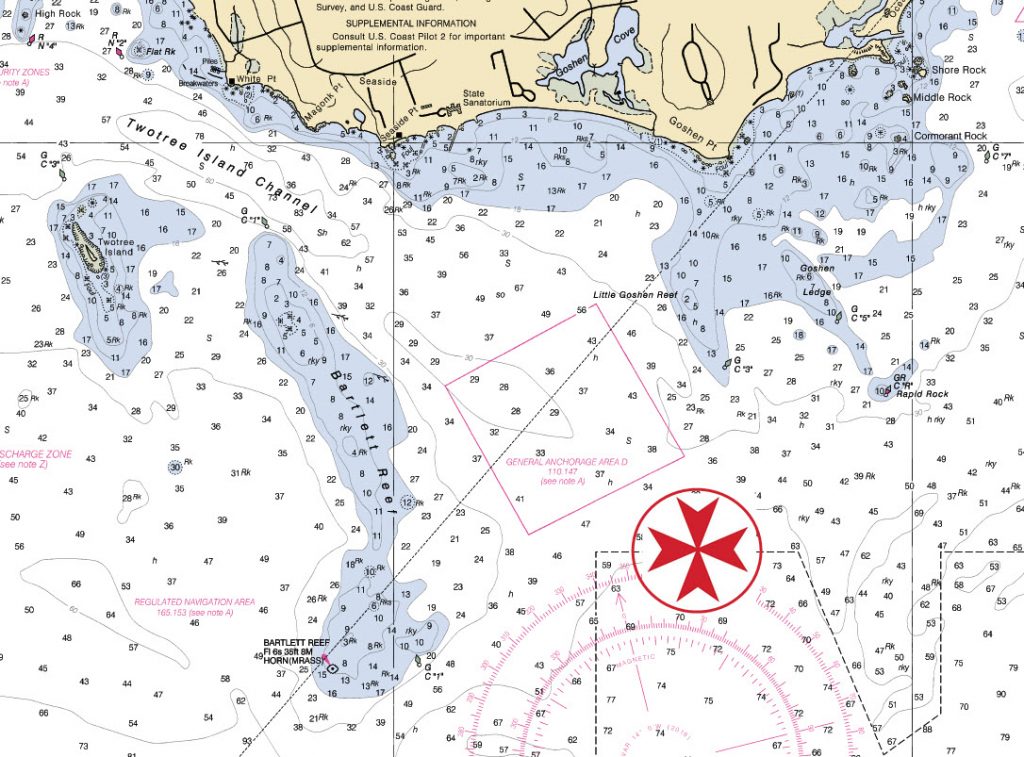
Article from the Naugatuck Daily News which pointed the research team in the right direction.
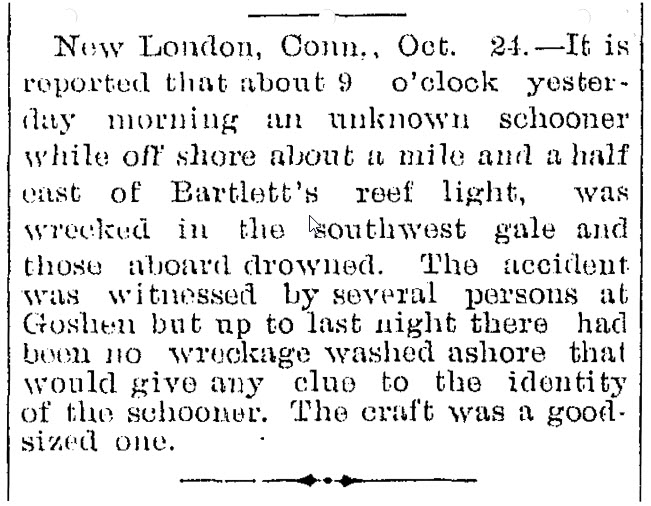
Newspaper Articles from the New London Day about the sinking of the Oscar C. Aiken
A 3D image of the shipwreck using NOAA Bathymetric data.
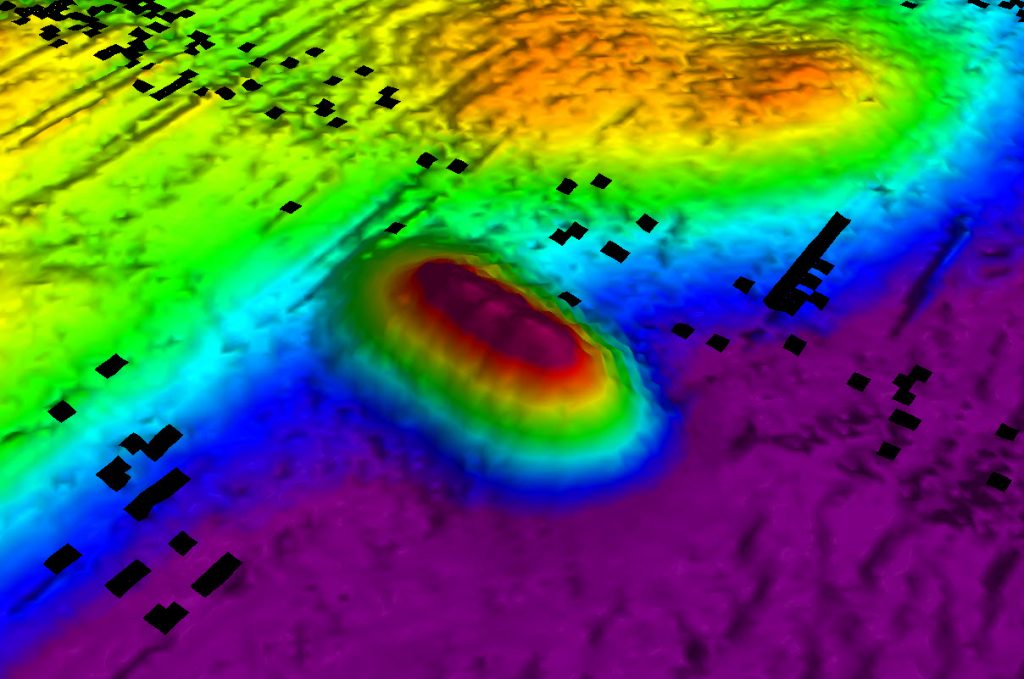
The shipwreck with dimensions
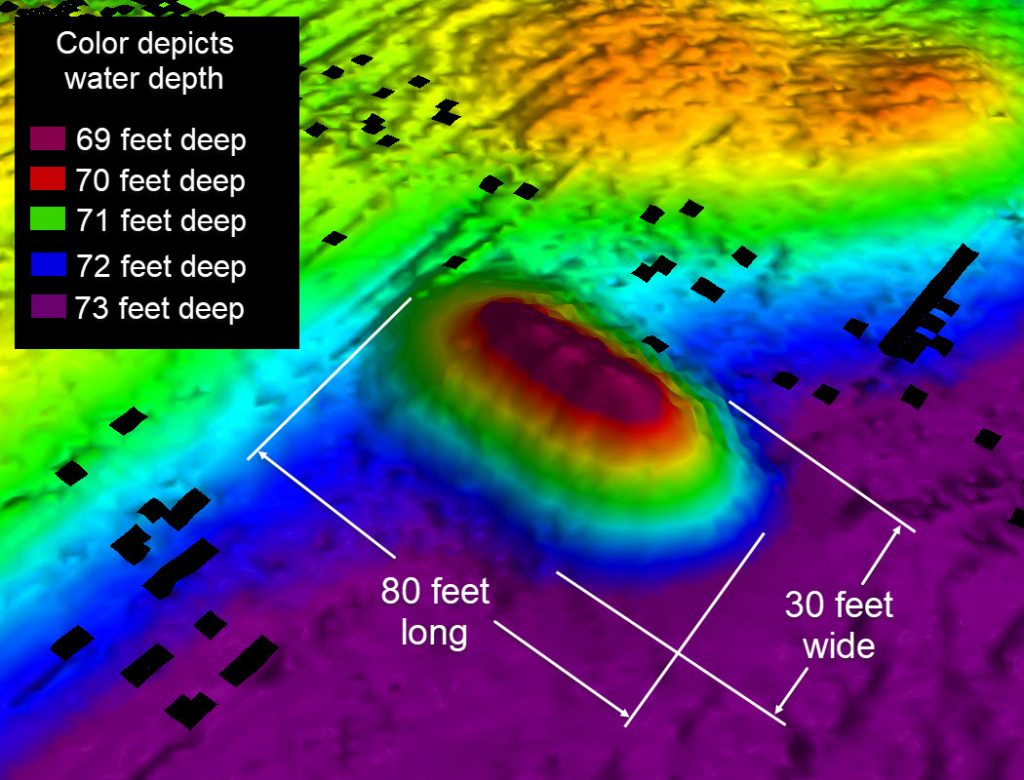
Artifacts on the Oscar C. Aiken, Sounding Lead (left) and Deadeye (right)
Merchant Vessels of the U.S. entry for the Oscar C. Aiken


